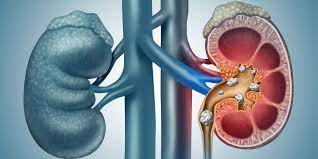Introduction
The major function of the kidneys is to remove waste products and excess fluid from the body in the form of urine. Crystals begin to form when the waste generated is far more than the liquid. These crystals attract other elements and join together to form solid lumpy deposits of chemical substances or waste products in the kidney, which are called kidney stones.
These stones pass through the urine. However, few stones grow bigger as more minerals accumulate in the smaller ones, which don’t dissolve on their own. These bigger stones sometimes tend to move as they dissolve and cause discomfort.
Common symptoms include excruciating pain in the lower back, nausea, vomiting, fever, chill, blood in urine, urine that smells bad or looks cloudy. Medications, an unbalanced diet, excess body weight, some underlying medical conditions, and certain supplements are among the many causes of kidney stones.
Kidney Stone Treatment Options
Let us have a look at the widely used treatments in India:
- Shock Wave Lithotripsy (SWL):
SWL is the most common non-invasive kidney stone surgery for patients having small or medium stones. It works fine in small or medium stones. To break the stones inside the kidney, high-energy shock waves are used.
- Percutaneous Nephrolithotomy or Percutaneous Nephrolithotripsy (PCNL)
PCNL is an invasive kidney stone treatment for patients having large or irregular-shaped kidney stones or people with infections or stones that have not been broken up. To break up the stones, high-frequency sound waves are used, whereas a suction machine is used to vacuum up the dust using a suction machine.
When the stone is removed through the medium of the tube, it is called nephrolithotomy, whereas when the stone is broken up and then removed, it is called nephrolithotripsy.
- Urethroscopy / Ureteroscopy:
Ureteroscopy is a minimally invasive method performed under general anesthesia to treat kidney stones. This kidney stone surgery is done by inserting a thin fiberoptic ureteroscope into the natural urinary channel, which can be fragmented and/or removed when the stone is identified.
- Open Surgery:
Open surgery is an invasive kidney stone surgery treatment. This procedure is apt for large stones or stones that cannot be removed or crushed with other treatments.
Comparison
| Criteria | SWL | PCNL | Ureteroscopy | Open Surgery |
| Invasive / Non Invasive | Non-Invasive | Minimal Invasive | Non-Invasive | Invasive |
| Anaesthesia | Yes | Yes | Yes | Yes |
| Hospital Stay | No | 2-3 days | 1 day | 2-4 days |
| Pain | Yes | No | No | Yes |
| Recovery | Quick recovery | One week | Quick recovery | One week |
| Risk of Blood Loss | Yes | Yes | No | Yes |
| Risk of Infection | Yes | Yes | No | Yes |
Conclusion
Surgery, be it emergency or elective, is carried out for several reasons. Before you decide the type of surgery, please make sure that you understand the risks and benefits of each of your treatment options. Enquire with your doctor about the side effects of the surgery, the odds that it will treat your kidney stone, length of stay in the hospital, how to control pain after surgery, and chances of repeating the surgery. After all, like most people, you would want to get the right medical treatment to ensure a peaceful and healthy lifestyle.





